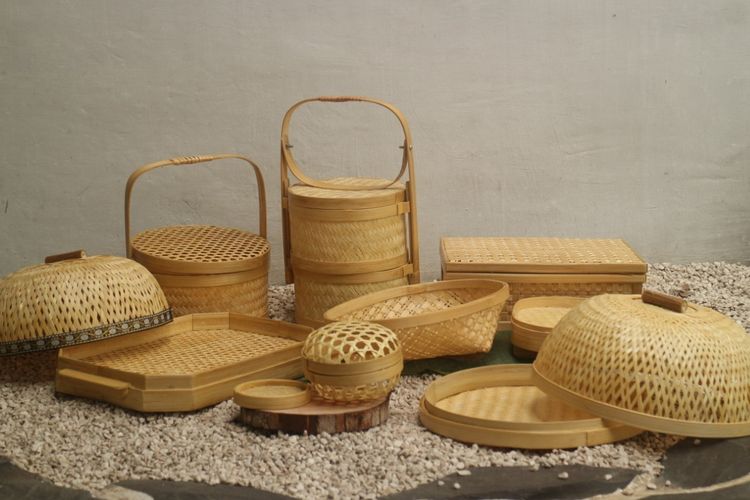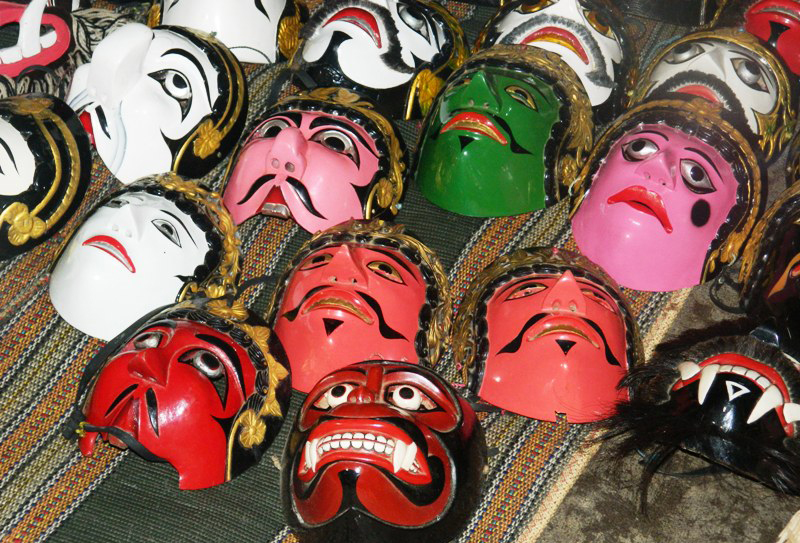Balinese masks hold significant cultural and religious importance in Balinese society:
Balinese masks hold significant cultural and religious importance in Balinese society. The central hub for Balinese masks, both in terms of production and cultural significance, is the island of Bali itself. Within Bali, several regions and villages are renowned for their expertise in mask-making and their contribution to Balinese performing arts.
Here’s some information about Balinese Mask:
Traditional Performances of Balinese mask barong is commonly used in traditional dance-dramas such as the Balinese mask dance and Balinese topeng dance. These performances depict stories from Hindu epics like the Ramayana and Mahabharata, as well as local folklore. Each mask carries its own symbolism and character. For example, the Barong mask represents the benevolent spirit protecting the village, while the Rangda mask symbolizes evil and chaos. Balinese masks are typically crafted from wood, often from the lightweight but durable albizia or pule wood. Artisans carve and paint the wood by hand, intricately detailing the facial expressions, colors, and accessories of each mask.
Balinese mask characters:
Masks are believed to embody the spirits of the characters they represent. Before performances, masks are ritually consecrated by a priest to invoke the spirit and ensure a successful and spiritually powerful performance. Balinese masks are also used in various religious ceremonies and rituals. They play a role in temple festivals, cremation ceremonies, and other important cultural events, where they are believed to ward off evil spirits and bring blessings to the community. Balinese mask-making is considered a highly skilled art form passed down through generations. Artisans often innovate and adapt traditional designs to create new variations, showcasing their creativity and mastery of the craft.
Visitors to Bali can experience Balinese mask making firsthand by visiting workshops and galleries in artisan villages such as Ubud and Mas. Here, they can observe artisans at work, learn about the cultural significance of masks, and purchase authentic pieces as souvenirs.
Overall, Balinese masks serve as powerful cultural symbols, blending artistry, spirituality, and tradition in Balinese society. They continue to play a vital role in preserving and promoting Bali’s rich cultural heritage.
History of Balinese Masks:
The history of Balinese masks is deeply intertwined with the island’s rich cultural heritage and traditional performing arts.
Here’s an overview:
Origins of Balinese masks have ancient roots, dating back to the island’s pre-Hindu animistic beliefs. Masks were used in rituals, ceremonies, and performances to connect with spirits, ancestors, and gods. With the arrival of Hinduism to Bali around the 1st century CE, Balinese culture underwent a significant transformation. Hindu epics such as the Ramayana and Mahabharata became important sources of inspiration for Balinese arts, including mask-making.
Over the centuries, Balinese masks became integral to traditional dance-dramas such as the Barong dance, Topeng dance, and Wayang Wong (shadow puppet theater). These performances served as a medium for storytelling, moral teachings, and religious expression. Balinese masks represent a diverse range of characters, each with its own symbolism and significance. For example, the Barong mask symbolizes protection and benevolence, while the Rangda mask represents chaos and evil. Other masks depict gods, demons, kings, queens, warriors, and animals, each with their own traits and attributes.
Balinese masks are typically handcrafted from wood, with artisans using traditional carving and painting techniques to bring them to life. The choice of wood, such as albizia or pule wood, ensures that the masks are lightweight yet durable. Artisans meticulously carve intricate details and apply vibrant colors to create expressive facial features and elaborate designs. Spiritual Significance masks are believed to embody the spirits of the characters they represent. Before performances, masks undergo ritual consecration by a priest to invoke the spirit and ensure a successful and spiritually powerful performance. Masks are also used in various religious ceremonies and rituals to ward off evil spirits and bring blessings to the community.
Despite modernization and globalization, Balinese mask-making remains a vibrant and cherished art form. Efforts are underway to preserve and promote traditional mask-making techniques, with workshops, galleries, and cultural institutions playing a crucial role in transmitting knowledge and skills to future generations.
In summary, the history of wooden Balinese masks is a testament to the island’s cultural richness and artistic heritage. These masks continue to captivate audiences and serve as powerful symbols of Bali’s spiritual and artistic traditions.

